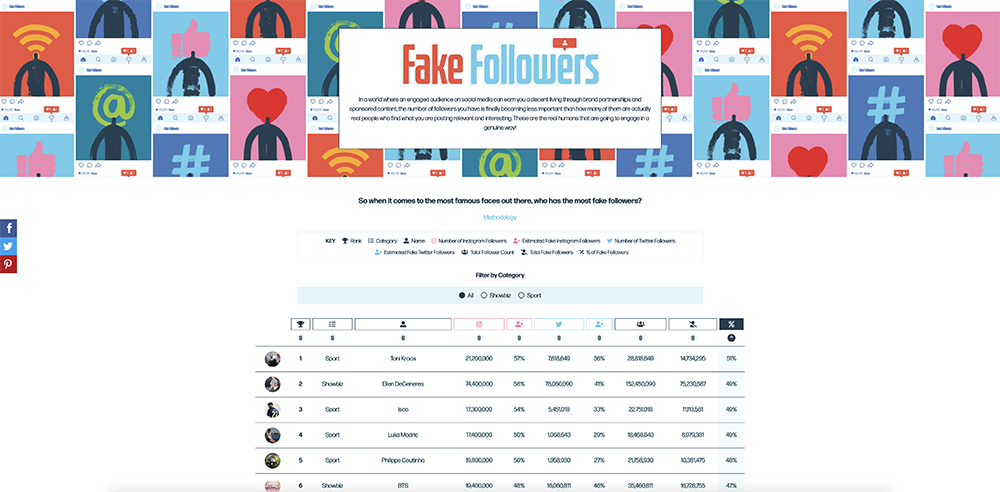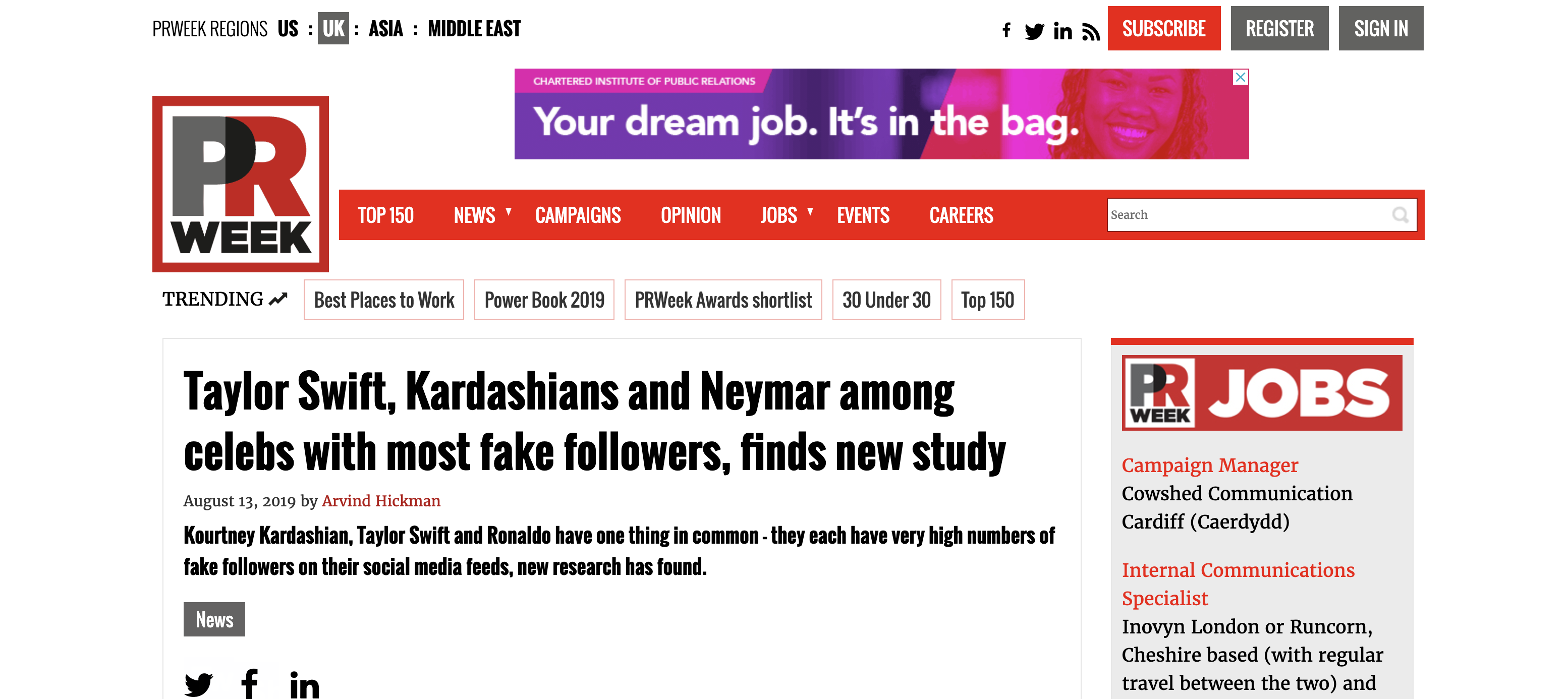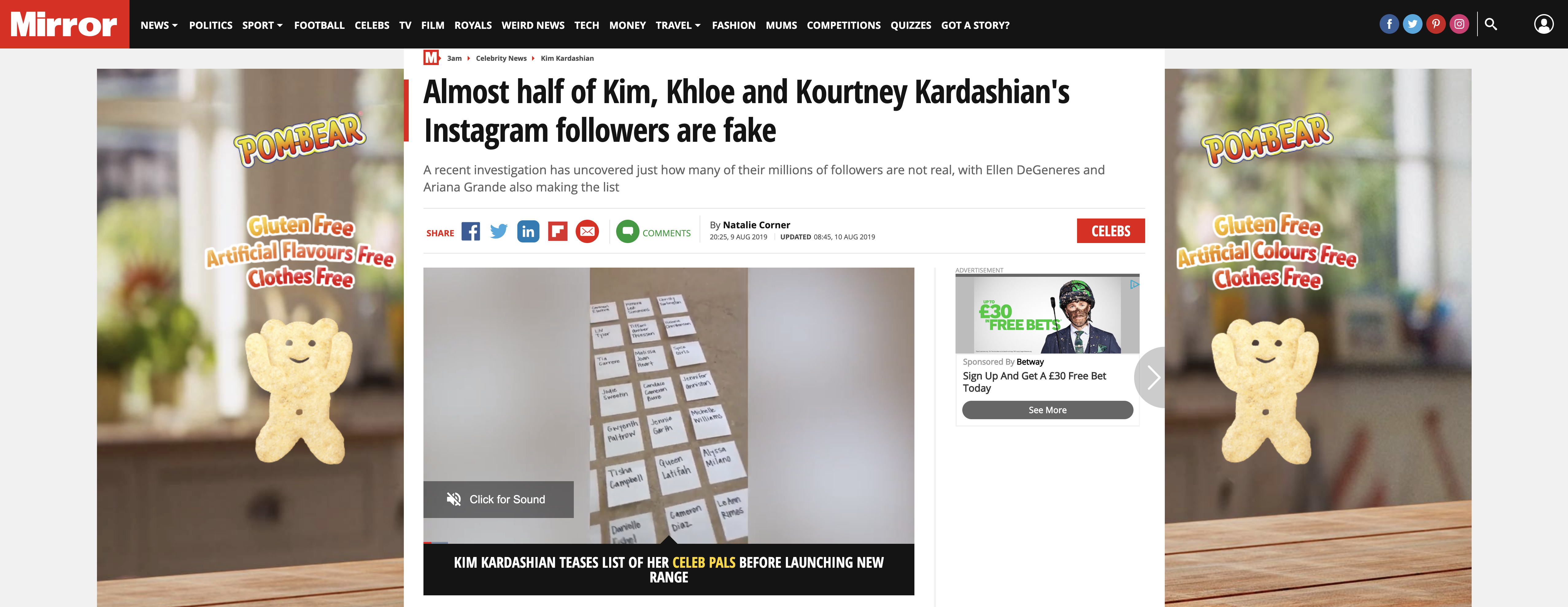One of the most effective ways to build links today is digital PR.
No other tactic gives you the opportunity to earn links from authority top-tier publications, at scale.
So long as you develop a process for coming up with great ideas and concepts for campaigns, it isn’t unusual to earn significant numbers of quality links from trusted publishers.
Often links which money couldn’t buy, however hard you tried, and it’s these links which drive real, measurable, organic growth.
Yet, I repeatedly see the same mistakes being made in outreach:
Terrible subject lines.
Subject Lines Are Killing Your Campaign’s Chance of Success
Think about it this way:
Email opens lead to reads of your outreach email. In turn, this leads to clicks to your campaign and, hopefully, coverage and links.
If your subject line doesn’t encourage the recipient to open your email, there’s a good chance you’ve lost the chance of a link from that publication.
Writing a great subject line is hard. It takes time and thought to get it right.
However, over the past few years, I’ve seen a few common mistakes made which result in bad subject lines.
Let me share with you, based on my experience of launching more than 100 campaigns each year for the past three years, how to write an excellent subject line for your outreach emails to help you improve your open rates and maximize the links earned through digital PR and content marketing.
What’s an Average Open Rate?
Hopefully, you’re already tracking the open rate of your outreach emails. But, if you’re not doing so, you need to be.
You can easily track this through platforms such as BuzzStream, Pitchbox, Outreach.io, and many more.
Open rate data is one of the most valuable pieces of insight which you can have on a campaign for the simple reason is that it gives you an accurate figure as to how many of the people you reached out to have actually seen your email.
This is so insightful as it means, quite simply, that you can change up your subject line and resend to these people.
They’ve not read your email or clicked through to your campaign, so you can have the confidence that you aren’t resending prospects the same thing twice. (This, assuming that your list has been put together properly and you’re not just blind targeting anyone without consideration as to whether your campaign is relevant.)
But, what’s an average open rate?
According to data from my own campaigns over the past six months, the average open rate on outreach emails is 41%.
That means that, even after extensive testing of what does and doesn’t work for subject lines, only 4 in 10 of the prospects reached out to actually open the email.
However, analyzing data from older campaigns which I’d now happily claim have terrible subject lines, the open rate was around 23%; only an average of 2 in every 10 prospects opening.
See why it’s so important to get your subject line right?
Start By Finding Your Story…
Perhaps the most common issue I see with outreach email subject lines is using statements, not stories.
It’s important to remember that journalists often receive hundreds of email pitches each and every day.
Your subject needs to stand out amongst a sea of emails in an inbox; which journalists are without a doubt skim reading to see which stories catch their attention.
Firstly, let’s look at the difference between stories and statements.
In order to do so, let me share an example from a campaign I recently launched which studied the social followings of 100 celebrities across showbiz and sport to determine the quality of their followings – Fake Followers.

Here are two examples of subject lines. One is a story, the other is a statement.
- Subject Line 1: Study Reveals How Many Fake Social Followers 100 Celebrities Have
- Subject Line 2: Almost 50% Of The Kardashian’s Instagram Followers Could Be FAKE
While these two subject lines, on first look, aren’t too dissimilar to one another, in the eyes of a journalist, they’re a million miles apart.
Subject line 1 is a statement. It’s simply a description of what the campaign is and gives no indication as to what the actual story is.
Without any insight into the findings of the study, it’s all just guesswork. It could be that only 5% of a celebrity’s followers are fake. Or it could be that this figure is 90%. Who knows?
Journalists don’t have time to guess what a story might be – they’re looking for headlines and they need to stand out.
With subject lines like this, you’re missing out on opportunities as it requires further work for a journalist to find a headline.
Subject line 2, on the other hand, tells a story.
Firstly, it focuses on one of the world’s most famous celebrity families, the Kardashians. This immediately picks up attention as many relevant journalists will know that there’s an audience for content which talks about Kim and co.
Secondly, and more importantly, it uses a standout statistic – that almost 50% of the Instagram followers of the Kardashians might be fake.
It’s a headline which makes you stop and think about the real issue; one where these social influencers many of us follow may not be as influential as we think.
You need to be able to make a journalist understand what your story is, and what their headline could be, in the subject line.
As a general rule, a statement simply describes what your campaign is. The whole ‘Client X Launches Campaign Y’ concept. This isn’t a story and it won’t get journalists excited.
On the other hand, a story-based subject line reveals the findings of a study and makes the whole purpose of the campaign clear.
Typically, this means using data and key insights so that a journalist can see immediately whether it’s something which stands out and is of interest for them to explore further (i.e., by reading your email).
For further insight into stories vs. statements, check out this Whiteboard Friday by Shannon McGuirk which goes into the topic in more detail.
Let’s have a quick look at some of the headlines which the campaign in question earned:



Perhaps unsurprisingly, we can see that the headlines across the campaign (which, as of writing this, has earned links and coverage from 275 unique domains/publications) focus across a few main areas:
- The standout stars with fake followers (the ‘multi-celebrity’ hook).
- The percentage of fake followers which certain stars have (the ‘high percentage’ hook).
- The sheer number of fake followers which many stars have (the ‘high number’ hook).
These headlines were common across the majority of the coverage.
This is just one example of how headlines can be interpreted from a campaign.
How to Write a Subject Line Which Gets Opened
Hopefully, you now understand the difference between a story and a statement and have an idea as to a target open rate you’re aiming for (or, at least, an indication as to when a subject line isn’t strong enough based on data).
Here are five top tips for writing a subject line which gets opened.
1. Tell Your Campaign’s Main Story
Hopefully, by this point, it’s common sense, but you need to make sure that your subject line tells your campaign’s main story.
If you’re struggling to figure out what that is, ask yourself “what’s the one thing which this campaign tells our audience?” and craft your subject line around that.
You’ll almost certainly already know this from working on the research and production of a campaign, however, it can often become diluted and it’s easy to lose sight of what that standout story really is.
If you can tell your story in one sentence, you’re almost there with crafting your subject line.
Even when there are multiple stories from a campaign, start with the strongest and use that.
Don’t forget, the whole purpose of an email’s subject line is to encourage the recipient to read it. You need to ensure a journalist can begin to understand the story you’re wanting them to cover without even having to click into the email.
2. Use Data & Statistics
While you’re telling your story, it can really help to use data and statistics to really emphasize the scale of findings from research.
Let’s look at an example:
- Subject 1: Study Reveals Many Of Kim Kardashian Instagram Followers May Be Fake
- Subject 2: Study Reveals Almost 50% Of Kim Kardashian’s Instagram Followers May Be Fake
Just a very small chance can make all the difference. In these examples, subject 2 is ultimately more impactful, and the only change is that a statistics of ‘almost 50%’ replaces ‘many of.’
Data and statistics can really help to enhance a subject line and demonstrate the specifics of a story at the top level.
3. Don’t Leave A Journalist Guessing
If you’ve ever been told to write vague subject lines which use an element of mystery to encourage opens, forget it.
Journalists don’t have time to open an email on the off-chance that there’s something interesting inside.
Unfortunately, in most cases where a subject line reads something like “I’ve got a great tip for you…” it means that there isn’t anything too valuable inside. It’s clickbait and journalists won’t fall for it.
Similarly, make sure that your own subject lines based around stories aren’t too vague either. You don’t want to keep a journalist guessing, even if you’ve used a headline from your story.
You need to be able to clearly demonstrate the hook of your story in a straightforward subject line and if you’re not currently doing that, you need to try again.
A journalist should be able to understand the key, standout headline without even opening your email.
4. Keep Them Concise
You shouldn’t be writing long subject lines, they’ll just get truncated in inboxes.
Don’t forget that many emails are now opened on mobile devices, meaning that the first part of your subject line is by far the most important.
This doesn’t mean you need to cut all subject lines down to 6 or 7 words, the average point where Gmail’s app truncates, however it means you need to pay attention to this carefully.
Don’t place key stats at the end of a subject; rather rework until you can get them within the first few words.
It comes down to being concise and getting straight to the point. Avoid ‘fluffy words’ which don’t add any value and focus on the key takeaways and what the subject tells the recipient.
5. Use Emojis
Remember I mentioned that you need to try and stand out in a busy inbox?
Using emojis as part of your subject line can be a great way to do that.
Just compare the following:
- 🚗The Ford Mustang Has Been Revealed As The World’s Most Instagrammed Car
- The Ford Mustang Has Been Revealed As The World’s Most Instagrammed Car
Exactly the same subject line, apart from the use of an emoji at the start.
It might be a hack and may seem a little bit of a gimmick, but it works, with our data suggesting an average uplift in open rate of between 4% and 7% when using emojis.
Just a word of warning, however. Don’t force the use of emojis into subject lines, especially by using ones which don’t really bear much relevance to a campaign.
If you’re running a global travel campaign, use ✈️ or if your story is about dogs, use 🐶, but don’t use random emojis just for the sake of it.
Conclusion
It’s important that you understand the importance of taking the time to write excellent subject lines, otherwise, your campaigns may be underperforming as a result.
Journalists are busy people. They don’t have the time to guess what the story is inside your email.
So put in the effort to write a great subject line that clearly and concisely gives them a headline and gets them excited about your campaign.
More Resources:
- Getting to Links: 5 Tips for Successful Email Outreach
- How to Build Links via Non-Traditional Email Outreach
- Link Building for Beginners: How to Get Started
Image Credits
All screenshots taken by author, September 2019





